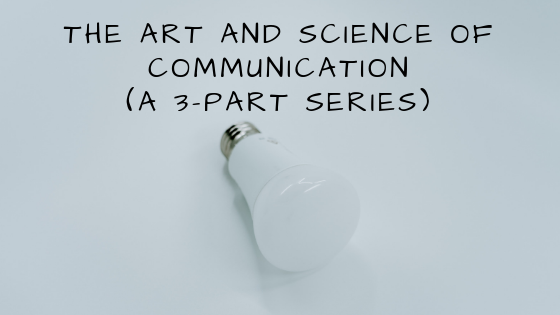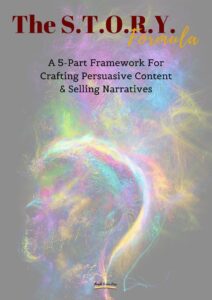There’s a big difference between talking and communicating. I wouldn’t have thought so not too long ago. I figured if I said something and I said exactly what I meant to say. Then, you should understand what I said.
But, that wasn’t always the case. Actually, I was constantly having to repeat myself. Look, it doesn’t help to repeat yourself if your original statement was unclear.
And, I hate repeating myself! Don’t you?
Have you ever been around someone speaking to you in a foreign language? No matter how many times they say the phrase to you, if you don’t understand the language you won’t understand what she’s saying. So repeating doesn’t help.
What about this…
Have you ever felt like you were only talking to yourself even though you were actually talking with someone? He was nodding his head and looking you in your eyes as you spoke. He said ‘okay’ when you finished. Then after the conversation, he proceeded to do nothing that you instructed him to do.
He was a very capable guy. He had the know-how and skills to complete the task. But, for some reason, he just didn’t do what you asked.
Because of poor communication, your time was wasted, your breath was wasted, and your patience wore thin. So, you sent all of your kids to their rooms out of frustration. ( I’m not only talking about kids here. I once heard a speaker say that having employees is like having an adult daycare. )
Poor communication is more common than you probably recognize. A lot of it is your fault…
Harsh? I know. But, have you ever looked at how you communicate?
These are some of the most important questions to consider in communication. What personal fault can you find in those incidences? Did you clearly convey your message? Was it well received before ending the conversation? How do you know? Did you wait for feedback?
Good communication is a skill that you can master. You’ll save yourself heartache and frustration by taking the time to master some them. Let’s starts. Shall we?
The first thing to understand about the skill of communication is that there’s an art and a science. As with most skills, in order to master it, you must understand the art side and the science side.
The science is the nuts and bolts. It’s how to communicate step-by-step. It says what should be done and what the results should be when the process of proper communication has been performed. It will also let you know, based on the results, what should be done to correct the problems in your communication.
There’s no fun part of communication on this side. It’s pretty robotic and static. Do this. Then, this. Then, this should happen. There’s nothing to it and it’s also the reason that we can successfully communicate with computers and, of course, Siri.
The fun part of communication the reason that most of us actually communicate with each other is the art side. The art side is where personality is injected in the plain-faced, dull communication process.
The art side helps you to be more engaging and memorable. When you have the art side down, you’re able to stimulate emotions on a deeper level. This side of communication is what half-time speeches are infused with. It’s what makes stories EPIC. It’s what takes your reader from where they are into imagery that is alive.
When you can effectively blend both the art and the science of communication you become an influencer. Many people can dictate data and information. Others are good at drawing out emotions. Few are able to connect with both sides of the audience’s brain – the logical and the emotional – by merely wrapping an impactful message within a few choice words.
If you would like to be a better communicator then stay plugged into the next few days. We will explore both sides of communication, both the art and the science. In doing so, I hope that you’ll be able to see what is possible when you improve your skills in communication.
Your task for today: listen to some speeches that have impacted your life in a significant way and think about how the speaker is communicating his or her message.
After you listen to a particularly impactful portion of the message, stop the recording and think about what the speaker said. Then, rewind that portion and listen to it again. What did you notice this time as you listened? Was it a story? Was it voice inflection? Was there some important details thrown in that now you understand?
Rewind it for a third time and listen to it. How can you use the technique the speaker used to improve your communication skills?
The art and science of communication are critical to your development. Be sure to listen to tomorrow’s message where we dive into the science side of communication.
Until then…
Why people don’t understand what you’re saying
Necessities:
Sender
Receiver
Message
These are the only three pieces of effective communication. There are some details to be filled in but those are the bare essentials. Most people believe — incorrectly — that satisfying these three areas are all that’s needed.
If you only focus on this one side of communication you will at least be able to get your point across. The dogmatic nature of what I’m going to teach you is very boring but effective. Think about computer programs. Unless you’re that type of person then this is just as dry.
People will understand you better if you use all of the steps in this article but it won’t guarantee influence. You’ll probably already need a level of respect established.
It’s a necessary part of effective communication, though. Prepare to be amazed by the simplicity of it all!
Before going into the deeper aspects of communication let’s define all three terms for the sake of the novice reader.
The sender is the person with a message to share.
The receiver is the person that is for whom the message is meant.
The message is the idea that the sender wants to convey.
Got that? Cool.
Here are the steps for complete communication.
- Sender has an idea that she wants to share
- She forms a message
- She chooses a medium (how she’s going to convey the message)
- She encodes the message (by choosing the symbols to use)
- She transmits the message
- The receiver decodes the message (by converting the symbols used)
- She understands the message
- She forms a message
- She chooses a medium
- She encodes her message
- She responds with her message
- The original sender decodes the message
- She also understands the message
This all happens very quickly in a normal conversation.
Sender says: “Do you want to go to the mall?”
Receiver responds: “Yes.”
The first half of the steps is called the message or transmission. The second half is called the response or feedback. If both halves are not present then, scientifically speaking, communication has not occurred.
Most people understand the process when it’s broken down to them. But, that doesn’t mean that they use all 13 steps during their conversation. Steps 7 and 13 are difficult steps. The message must be understood. There are a number of factors that can cause misunderstandings. Most of them can be classified under noise.
Noise usually occurs during steps 3-5 and 9-12. It’s defined as “anything that distorts the message intended by the source, anything that interferes with the receiver’s receiving the message as the source intended the message to be received. There are three types of noise: physical noise, psychological noise, and semantic noise.
The first type of noise interferes with the physical transmission of the signal or message. Psychological noise includes biases and prejudices, in both the sender and receiver that lead to distortions in receiving and processing information. In semantic noise, the interference is due to the receiver failing to grasp the meanings intended by the sender. This includes jargon, technical, or complex terms as being examples of semantic noise.
The process of communication may be disrupted in several ways. The sender’s senses may inaccurately perceive the object or event: by permanent or temporary damage to the sensory organs; by psychological or emotional damage to the decoding mechanism; or by forces that interfere with the sender’s perception and interpretation of the message. Finally, the sender may inaccurately transmit information regarding the message.” (excerpted from What is Noise in Communication? by Margot Beutler and Cynthia Lockley on February 9, 2016 http://wdcb.stcwdc.org/faq/faqs/what-is-noise-in-communication/)
All this translates into one thing: be mindful of the message that you send and the feedback that you receive in response to your message.
If you don’t, then the words “Olive Oil” mouthed across the room but not verbalized in response to the comment: “I’m going to the store. Do you need anything?” receives a smile, a nod, and an air kiss as your husband bounds out the door.
He thinks you said, “I love you.” He obviously didn’t get your message. So, don’t expect to be sautéing any vegetables tonight in the aromatic scents of the oil you’d like to use.
Your task for today: think about what you want to say before you say it.
You just might be the reason that you’re not getting the responses that you want.
Are you using the best medium (text, email, letter, phone call, face-to-face)?
Are you using the best symbols (visual or auditory)?
Is your message clear and concise?
One last note… Most people only read at a 7th-grade level. It’s not that they aren’t intelligent. It’s that they stopped reading after a certain point and therefore their vocabulary hasn’t grown much more since then. If you want your message more easily understood, then score at the 7th grade level on the Flesch-Kincaid test for readability.
Downgrade your words if you need to. But, either way, take the time to ensure all of the steps are followed and as much noise as possible is eliminated throughout. Tomorrow, we dive into the art side.
It’ll be fun and full of examples.
Until then…
No More Dull Talk
If a picture is worth 1,000 words, it makes sense that you should fill in some of the colors yourself if you want your message well received, right?
What do I mean?
Your non-verbal communication and word choice frame and paint your canvas. The better you are at framing your message and painting the better you’ll be at influencing your audience. For the sake of discussion, let it be known that I’m not only talking to the professional speaker. I’m also talking to the mom, the blue-collar worker, and the teenager.
You’re saying a lot more with everything else that you do than you do with your words. A study by the University of Pennsylvania revealed that over 90 percent of your communication has nothing to do with your words. That means how you stand, your facial expression, your voice inflection, your speech rate, and your pauses — among other things — add to or take away from what you’re saying.
Wow!
Think about what I just said. You have a lot of power at your command if you take the time to align your non-verbal communication up with the words that you use.
I’ll give you a tip: be present during your conversation. The receiver’s body language will help you gauge how well your message is understood.
When you’re present in your conversation, you notice the subtle hesitations, twitches, and breathing of the person that you’re speaking to. When you’re present, you’re mindful of not only how you’re feeling but also of the energy of the person you’re speaking to. When you’re present, you focus in on the receiver.
While we’re here…
There’s a very important part of this side of communication that must be addressed. Integrity, honesty, and respect are the hallmarks of great communicators. People listen to them because of who they are or who they perceive the speaker to be.
If you want to improve your influence and master the art of communication, be the person that people trust to say the right thing and, more importantly, speak the truth. People can hear the conviction in your voice when you speak from your heart. Their spirits vibrate with excitement when bells of truth resound.
That’s why Mama’s always right!
I want to end this article with a discussion of an excerpt. Listen to how the author illustrates his point with descriptive words and a story. His word choice paints a picture with which he covers his message. Then, he unveils it as only an artist can.
“Do you remember how Boy Scouts are taught to make a fire without using matches? First, they cut a pile of dry wood shavings, then they strike a flint until a spark falls onto the shavings. Finally, they blow on the spark until the shavings start to blaze.
Getting through to other people is much like this fire-starting project. First, you prepare a ‘bed’ of attention, then you strike a spark and conversationally fan it until it creates a blaze of interest.” (The Art of Conversation by James A Morris, Jr.)
Were you able to see the fire being started?
The author uses descriptive words to show you what’s happening. Then, he transfers that image while it’s fresh in your mind onto another scene. You’re no longer talking about an actual fire. You’re talking about a figurative fire that you have sparked in your audience.
Amazing, right?
You can do it, too? You do it when you tell stories about your life or your experiences.
When you learn to wrap those stories around meaningful messages, you have added another dimension to your communication. You have raised your art proficiency in communication. A worthy feat! If I must say so. And…
I do.
Your task today: be more present in your conversations.
What is your body language saying?
Are you being honest and telling the truth?
Can you deliver your message in a story or metaphor?
Ask yourself some questions after a meaningful conversation. Were you being a good listener? Did you understand what the other person(s) were saying? Did you deliver your message clearly and concisely? Could you have done anything better?
I don’t want you to be timid or unnatural in your regular conversation. So, don’t think that you need to ask these questions after every interaction. You’ll unnerve yourself.
Be aware of how you’re communicating visually and orally. It makes a difference.
Until then…
This study was enlightening, wasn’t it? I’ve shed the light on more ideas that will move you out of mediocrity into your greatest self. Feeling adventurous or like you want to get away? Dive into this article on how to explore the new direction of your life with some tips on how to be successful while doing it. If you’re going to be out taking risks, it going to require some mental fitness if you’re going to succeed. And, don’t forget to sign up for updates. It’s worth way more than the investment. I give you my word on that.





